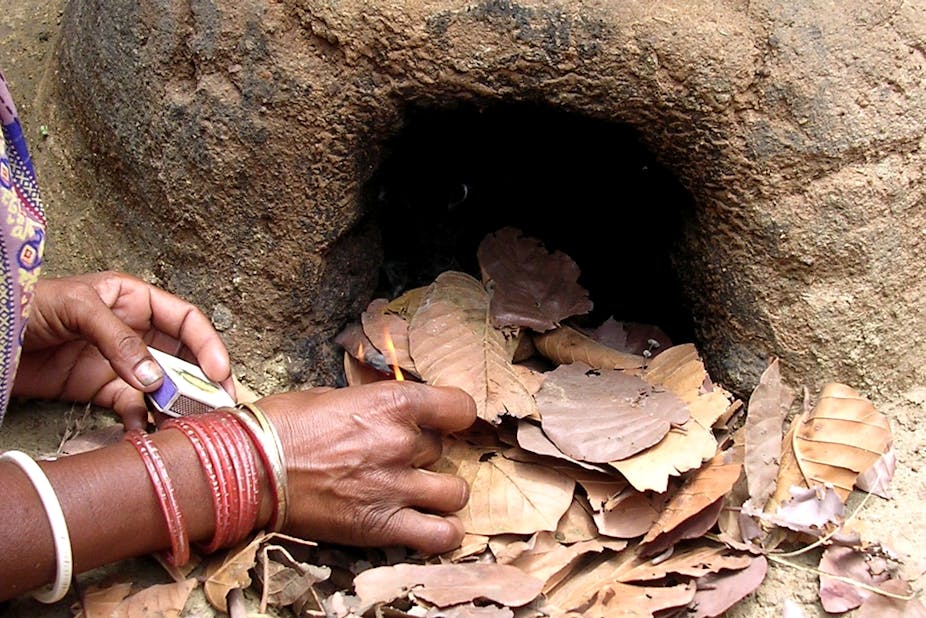The ineffective burning of wood in traditional stoves means that more people die around the world from pollution indoors than outdoors. There are simple, cleaner alternatives for sale, but encouraging the purchase of them has proved difficult. A project in India, however, is using rural women’s social networks to successfully change the situation and those selling improved stoves can learn from that project.
A recent report from the World Health Organisation (WHO) estimates around 4.3m deaths globally in 2012 due to indoor air pollution and almost all of them in low and middle income countries. In comparison, outdoor air pollution led to 2.6m deaths.
The WHO report believes that nearly three billion poor people, who rely on solid fuels for cooking and heating, are at risk of being affected by indoor pollution. Nearly 50% deaths among children under five in underdeveloped countries are the result of acute lower respiratory infections caused by indoor pollution in the form of carbon monoxide and particulate matter generated by burning biomass. Such biomass is the cheapest and most widely available fuel. Continuous exposure to such indoor pollution can lead to other health problems. Women – who spend more time near stoves – are particularly badly affected.
One solution to changing this is to use improved stoves. In most countries, these are available from governments and charities. Some provide them for free, but most places offer it at subsidised prices.
Improved stoves come in different designs, but the main idea is to ensure that the fuel is burned effectively, so that it does not create soot or toxic carbon monoxide. This is achieved by improving airflow near the site where the fuel is burnt. Some designs allow the removal of gases released from the burning fuel away from the person sitting near the stove.
The health benefits are usually long term, so people don’t always opt for the purchase even at subsidised rates. Even when they are provided for free, a lot of the people quickly stop using them.
The Indian government’s National Program on Improved Cookstoves is a good example of the kind of government-led stove interventions that can go wrong. Although there was money available for the program, it failed because of poor stove design, misunderstanding of the community’s needs and poor distribution networks. NGOs do better, but often don’t have enough financial support.
Power of networks
Project Shakti, a programme launched by Hindustan Unilever, has found a way to use women’s social networks to bring about behaviour change and drive communities to adopt new products. Important insights can be drawn through this case and can be applied for sustained dissemination of improved cookstoves among such poor communities.
The project recruits influential women in rural communities who are called Shakti Ammas, where Shakti means “power” and Amma means “mother”. These Shakti Ammas have strong social network partnership with the other women in their communities. While earning a living from this programme, these Shakti Ammas influence the opinions of the peers in their networks.
In a country with the largest informal labour market, women often don’t find decent wages for their work. That is why even a small income can be a good driver. In this case, the influence leads to the purchase of Hindustan Unilever’s products, such as washing powders, soaps, shampoos or toothpastes, among the rural women in their networks. But there is much to learn from this marketing strategy to help other not-for-profit ideas to spread.
Penetrating the rural market in India has remained a big challenge because that population tends not to consume media and advertising in the way that urban folks do. But Project Shakti has been successful where most have failed. The strategy has been so effective that by 2013, more than 40,000 Shakti Ammas are working in 15 Indian states and these informal networks are changing behaviour in more than 100,000 villages.
Project Shakti provides two important insights for an effective dissemination of ideas and products. First, the influence of the group leader in informal community based networks has a marked prominence in dissemination of new products. Second, influential women within these social networks can become powerful agents to change traditions, culture, and social norms and can facilitate the uptake of new, cleaner products. These insights and cases such as Project Shakti are highly relevant to research studies focusing on the dissemination of improved cookstoves and eventually for causing a behavioural change among the rural communities to sustainably use these improved stoves.

